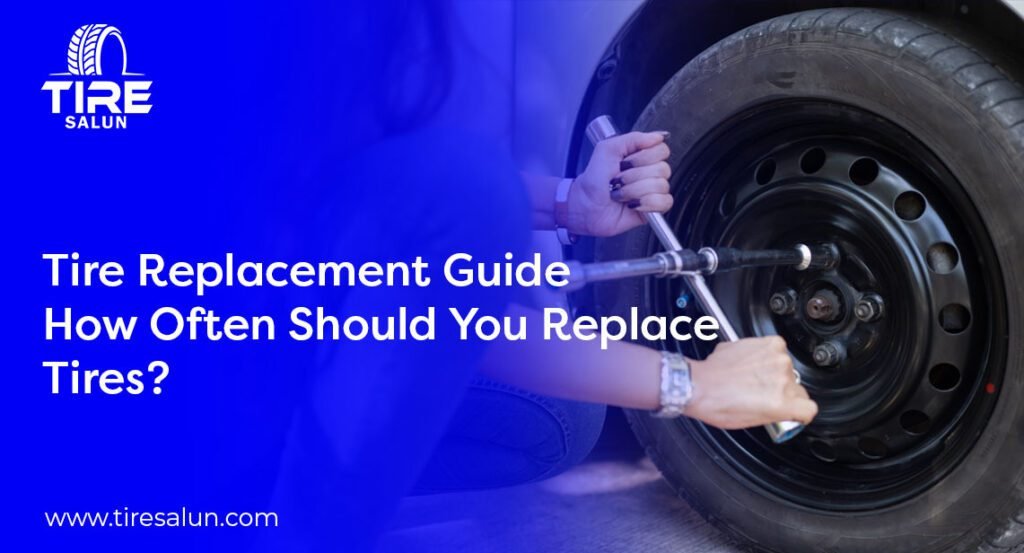Your car’s tires are one of the most critical components for safety and performance. The right tires ensure optimal handling, traction, and comfort while driving. But how do you know when it’s time for tire replacement? Whether you’re dealing with tread wear, tire damage, or simply the age of your tires, replacing them at the right time is crucial for maintaining your vehicle’s safety and performance.
In this comprehensive tire replacement guide, we’ll discuss how often you should replace your tires, signs that indicate it’s time for new tires, and other factors that can influence your decision.
Why Tire Replacement is Important for Your Vehicle’s Safety
Your tires are the only part of your car that make contact with the road, and their condition directly affects how your car performs. Worn-out or damaged tires can increase the risk of accidents due to poor traction, longer stopping distances, and reduced vehicle control. Here are a few key reasons why tire replacement is so important:
- Traction and Grip: Worn tires have reduced tread depth, which leads to poor grip, especially in wet or slippery conditions.
- Braking Performance: Tires with low tread depth have longer stopping distances, which can be dangerous in emergency situations.
- Fuel Efficiency: Under-inflated or worn tires can reduce fuel efficiency by increasing rolling resistance.
- Comfort and Noise: Old tires can cause a rough ride and increased road noise, which can affect overall driving comfort.
By replacing your tires at the right time, you ensure better safety, performance, and comfort for your vehicle.
How Often Should You Replace Tires?
The frequency of tire replacement depends on several factors, including the type of tire, how you drive, and the road conditions you encounter. However, there are general guidelines to help you determine when it’s time to replace your tires.
- Tire Age
Even if your tires appear to have plenty of tread left, the rubber degrades over time, especially due to heat, UV exposure, and environmental factors. As a general rule, tires should be replaced every 6 to 10 years, regardless of tread depth. Always check the manufacturer’s recommendations for specific age limits. - Tread Depth
Tread depth is one of the most obvious signs that your tires need replacement. Use a tread depth gauge or the penny test to measure the tread. If the tread is less than 2/32 of an inch deep, it’s time to replace your tires. Shallow tread makes your vehicle more prone to hydroplaning and increases stopping distances. - Uneven Tread Wear
If your tires show uneven wear patterns, such as one side being more worn than the other, it could indicate issues with alignment, suspension, or tire pressure. In such cases, tire replacement may be necessary to ensure proper performance and safety. - Visible Damage or Bulges
Any visible damage, such as cuts, punctures, or bulges in the sidewall, warrants tire replacement. These types of damage can compromise the structural integrity of the tire, making it dangerous to continue driving on. - Frequent Flats or Loss of Pressure
If you find yourself dealing with frequent flats or tires that lose air pressure often, it may be a sign that your tires are too old or damaged. In such cases, replacing them can save you time and money in the long run.
Factors That Influence Tire Replacement Timing
While the general recommendation is to replace your tires every 6 to 10 years, other factors can influence how often you should replace your tires:
- Driving Habits
Aggressive driving, such as frequent speeding, hard braking, and sharp cornering, can cause excessive wear on your tires. If you engage in such driving habits regularly, you may need to replace your tires more frequently. - Road Conditions
If you frequently drive on rough or unpaved roads, your tires will wear out faster. Likewise, roads with heavy debris, potholes, or sharp objects can lead to premature tire damage. - Climate
Extreme temperatures, whether hot or cold, can also affect tire longevity. In hot climates, like the UAE or other desert areas, tires are exposed to high temperatures, which can cause them to age faster. Cold weather can lead to tire hardening, reducing traction. - Tire Quality
Higher-quality tires tend to last longer. When choosing new tires, consider investing in reputable brands known for their durability and performance. While they may cost more initially, high-quality tires can provide better value over time due to their extended lifespan.
Read more : Low-Profile Tyres in UAE: Style vs Function
How to Check if Your Tires Need Replacing
In addition to measuring tread depth, you can look for the following signs that indicate your tires need replacing:
- Cracks in the Sidewall: Cracked sidewalls are a clear indication that the tire’s rubber is drying out and breaking down.
- Bald Spots: Areas of your tire with little or no tread indicate that the tire has worn unevenly and needs to be replaced.
- Vibration or Noise: If you feel vibrations or hear unusual noises while driving, it could be a sign of tire damage or wear.
Internal Link to Tire Services
For professional tire replacement services, visit our Tire Services page. Our expert technicians can help you select the right tires for your vehicle, replace old or worn tires, and ensure your car is safe and ready to drive.
Conclusion:
Proper tire replacement is essential for maintaining your vehicle’s safety and performance. By regularly inspecting your tires, checking their tread depth, and considering factors like age and driving habits, you can ensure your car stays safe on the road. If you’re unsure whether it’s time to replace your tires, consult a professional for expert advice and services.
Visit our Tire Services page for reliable and expert tire replacement services to keep your vehicle in top condition.
FAQs:
Q1: How do I know if my tires are worn out?
If the tread depth is below 2/32 of an inch, or you notice uneven wear or visible damage, your tires need replacing.
Q2: Can I replace just one tire?
It’s best to replace tires in pairs (front or rear). Replacing just one tire can affect your car’s handling and performance. For all-wheel-drive vehicles, replacing all four tires may be necessary for balance.
Q3: How long do tires last?
The average lifespan of a tire is between 6 to 10 years, depending on usage, maintenance, and environmental factors.
Q4: Can I drive on tires with low tread depth?
It’s not safe to drive on tires with low tread depth as they provide poor traction, increasing the risk of accidents, especially in wet conditions.


